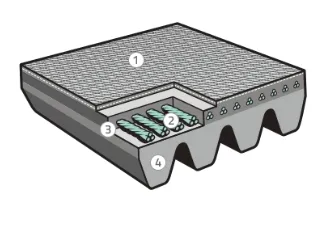- Arabic
- French
- Russian
- Spanish
- Portuguese
- Turkish
- Armenian
- English
- Albanian
- Amharic
- Azerbaijani
- Basque
- Belarusian
- Bengali
- Bosnian
- Bulgarian
- Catalan
- Cebuano
- Corsican
- Croatian
- Czech
- Danish
- Dutch
- Afrikaans
- Esperanto
- Estonian
- Finnish
- Frisian
- Galician
- Georgian
- German
- Greek
- Gujarati
- Haitian Creole
- hausa
- hawaiian
- Hebrew
- Hindi
- Miao
- Hungarian
- Icelandic
- igbo
- Indonesian
- irish
- Italian
- Japanese
- Javanese
- Kannada
- kazakh
- Khmer
- Rwandese
- Korean
- Kurdish
- Kyrgyz
- Lao
- Latin
- Latvian
- Lithuanian
- Luxembourgish
- Macedonian
- Malgashi
- Malay
- Malayalam
- Maltese
- Maori
- Marathi
- Mongolian
- Myanmar
- Nepali
- Norwegian
- Norwegian
- Occitan
- Pashto
- Persian
- Polish
- Punjabi
- Romanian
- Samoan
- Scottish Gaelic
- Serbian
- Sesotho
- Shona
- Sindhi
- Sinhala
- Slovak
- Slovenian
- Somali
- Sundanese
- Swahili
- Swedish
- Tagalog
- Tajik
- Tamil
- Tatar
- Telugu
- Thai
- Turkmen
- Ukrainian
- Urdu
- Uighur
- Uzbek
- Vietnamese
- Welsh
- Bantu
- Yiddish
- Yoruba
- Zulu
নভে. . 24, 2024 01:33 Back to list
automotive drive belts
Understanding Automotive Drive Belts Their Importance and Maintenance
Automotive drive belts play a crucial role in the performance and functionality of modern vehicles. These belts are essential components that transmit power from the engine to various parts of the vehicle, enabling systems such as the alternator, power steering pump, water pump, and air conditioning compressor to function effectively. Understanding the importance and maintenance of drive belts is vital for any vehicle owner.
Types of Drive Belts
There are primarily two types of drive belts found in vehicles today serpentine belts and timing belts.
1. Serpentine Belts These are long, continuous belts that snake around multiple pulleys, driving various accessories connected to the engine. The serpentine belt's design allows it to be more efficient and compact, replacing multiple belts that were commonly used in older vehicles. The serpentine belt is typically made from rubber and reinforced with materials like polyester or nylon to enhance durability.
2. Timing Belts Unlike serpentine belts, timing belts play a critical role in the engine’s internal mechanics. They synchronize the rotation of the crankshaft and camshaft, ensuring that the engine’s valves open and close at the correct times during each cylinder’s intake and exhaust strokes. Timing belts are usually made from reinforced rubber and must maintain precise timing to prevent engine malfunction.
Importance of Drive Belts
The importance of drive belts cannot be overstated. They are integral to the proper functioning of essential vehicle systems. A failing drive belt can lead to a range of problems
- Engine Performance The timing belt ensures that the engine components work in harmony. A malfunction can result in poor engine performance, increased emissions, or even catastrophic engine failure if the belt breaks.
- Accessory Functionality The serpentine belt powers critical accessories such as the alternator (which charges the battery), the power steering pump (which aids in steering), and the air conditioning compressor. A failure in the serpentine belt can cause these systems to stop functioning, making the vehicle difficult or unsafe to drive.
Signs of Wear and Tear
As with any vehicle component, drive belts can wear out over time. Recognizing the signs of a failing belt is key to preventing more significant issues. Some common symptoms include
automotive drive belts

- Squeaking or Chirping Noises A worn or loose serpentine belt can create noise as it slips over the pulleys. - Engine Overheating A failing timing belt can disrupt the engine's timing, leading to overheating issues.
- Warning Lights Many modern vehicles are equipped with dashboard indicators that will alert drivers to any problems with the belt or the systems they power.
- Visible Damage Cracks, fraying, or chunks missing from the belt are clear indicators that it needs to be replaced.
Maintenance Tips
Preventative maintenance is key to extending the life of your drive belts. Here are some tips to keep them in optimal condition
1. Regular Inspections During routine maintenance, have a mechanic inspect your drive belts for signs of wear. This should include checking for cracks, fraying, and overall tension.
2. Replacement Intervals Refer to your vehicle's owner manual for recommendations on when to replace the timing and serpentine belts. Typically, serpentine belts should be changed every 60,000 to 100,000 miles, while timing belts often require replacement around the 100,000-mile mark.
3. Listen for Unusual Noises Pay attention to any unexpected noises while driving. If you notice squeaking or grinding sounds, it may indicate a problem with your drive belt.
4. Professional Service If you are unsure about the condition of your belts, consult a professional mechanic. They can provide insight and perform necessary replacements efficiently.
Conclusion
Automotive drive belts are vital components that contribute significantly to a vehicle's functionality and reliability. Understanding the type of drive belt your vehicle uses, recognizing warning signs of wear, and adhering to a routine maintenance schedule will ensure that your vehicle operates smoothly and efficiently. By taking care of these essential parts, you can help prevent costly repairs and extend the life of your vehicle.
-
Korean Auto Parts Timing Belt 24312-37500 For Hyundai/Kia
NewsMar.07,2025
-
7PK2300 90916-T2024 RIBBED BELT POLY V BELT PK BELT
NewsMar.07,2025
-
Chinese Auto Belt Factory 310-2M-22 For BMW/Mercedes-Benz
NewsMar.07,2025
-
Chinese Auto Belt Factory 310-2M-22 For BMW/Mercedes-Benz
NewsMar.07,2025
-
90916-02660 PK Belt 6PK1680 For Toyota
NewsMar.07,2025
-
drive belt serpentine belt
NewsMar.07,2025

